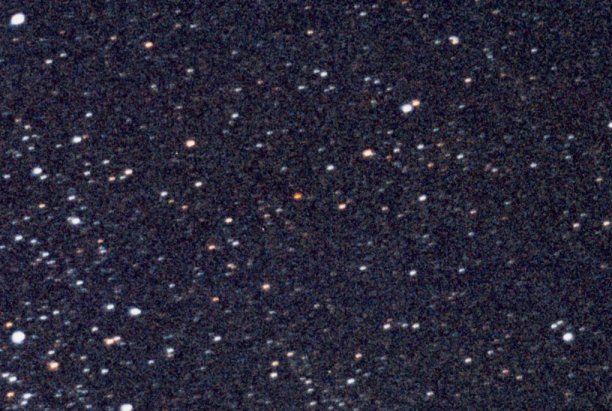
 |
The carbon star W Orionis, the first of its kind to be found, shines like a little jewel against the dark sky around seven degrees west of Orion's belt. With a luminosity that might be as high as 20,000 Suns, the star, bigger than the orbit of Earth, does not have long to live before becoming a dense, cooling white dwarf. |